I. What are the Processes of Meiosis?
Welcome back, assuming you’re coming from our “Meiosis: Significance and Overview” article! Now that you’ve got a general overview and idea of the meiosis and its importance, we’ll now move on to tackling its associated steps and phrases.
Though a little more complex than mitosis, you’ll see some similarities between them! In fact, both undergo the steps of prophase, metaphase, anaphase, and telophase (& cytokinesis)! However, as we’ll discuss, there are some major underlying differences that give each process its uniqueness.
Our job as educators is to make this process as simple as possible! We’ll take each phase step by step and concisely explain what’s going on as well as the importance of it. Additionally, rather than just memorizing what happens in each step, take time to also understand the significance as we’ll outline!
II. The Steps of Meiosis
Recall that meiosis ultimately results in 4 gamete, sex cells. In order to accomplish this, meiosis actually has 2 cellular division phases: meiosis I and II.
A. Meiosis I: Segregation of Homologous Chromosomes
Just like mitosis, meiosis I is subdivided into prophase I, metaphase I, anaphase I, and telophase I. To make things simpler to visualize, we’ll use a cell that only has 2 pairs of homologous chromosomes.
I. Prophase I: Synaptic Crossing Over to Increase Genetic Diversity
Just like in mitotic prophase, prophase I sees the nuclear envelope degrading, chromosome condensation, etc.
However, a form of genetic recombination called crossing over also takes place in prophase I which aids in increasing genetic diversity!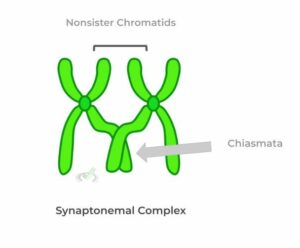
As shown, 2 nonsister chromatids on the homologous chromosomes can exchange genetic information at a point called the chiasmata.
Together the tetrad complex, because composed of 4 chromatids, is called the synaptonemal complex.
Let’s look at an example of crossing over to see how it can increase genetic diversity! Say we’re given a genotype of AaBb, where both genes A and B are on the same chromosome.
If crossing over doesn’t occur, we can only end up with the following gametes, decreasing genetic diversity.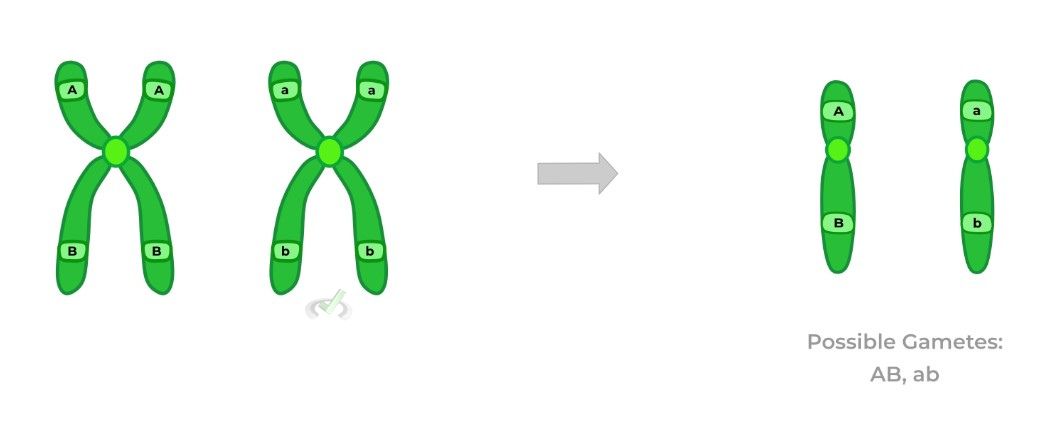
If crossing over does occur, the 2 sister chromatids can exchange genetic information. Specifically, they can swap their allelic variants as shown below for gene B.
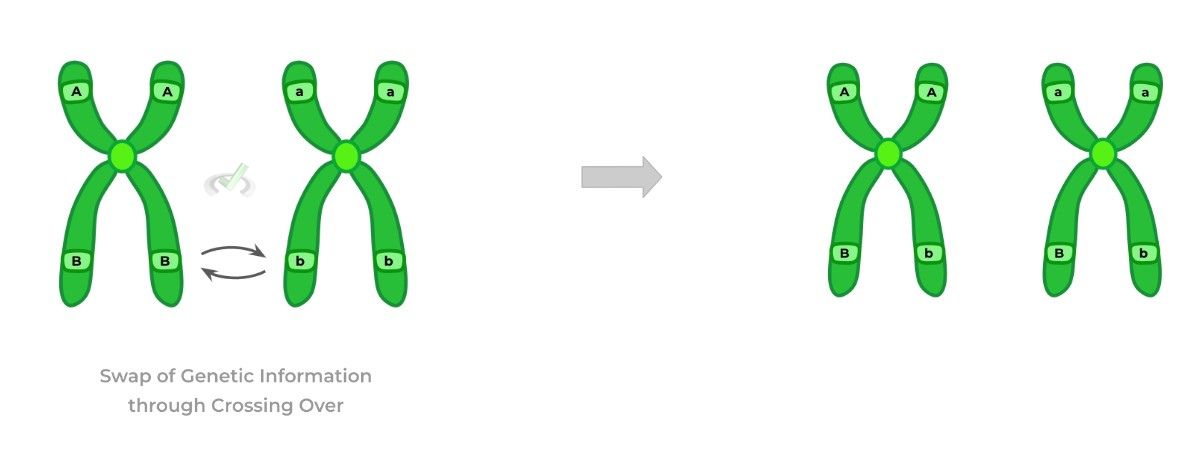
Now, when the sister chromatids are separated during meiosis 2, as we’ll touch on later, there are 4 possible gametes, each with a unique allelic combination as shown below!
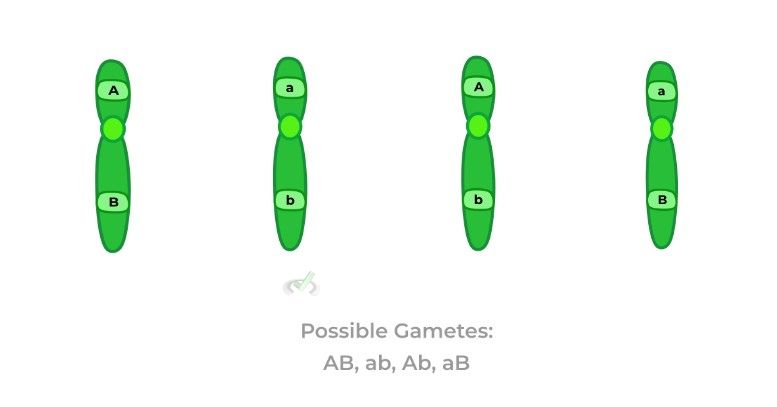
Note that only 1 homologous chromosome pair was used for simplicity but know that this holds true for all the other homologous pairs!
II. Metaphase I
Similar to mitotic metaphase, the chromosomes begin to align at the metaphase plate. However, in this case, it’s the homologous chromosomes that will be separated, not the sister chromatids!.
Because of this alignment, the resulting daughter cells will be haploid. Look at the side by side comparison below.
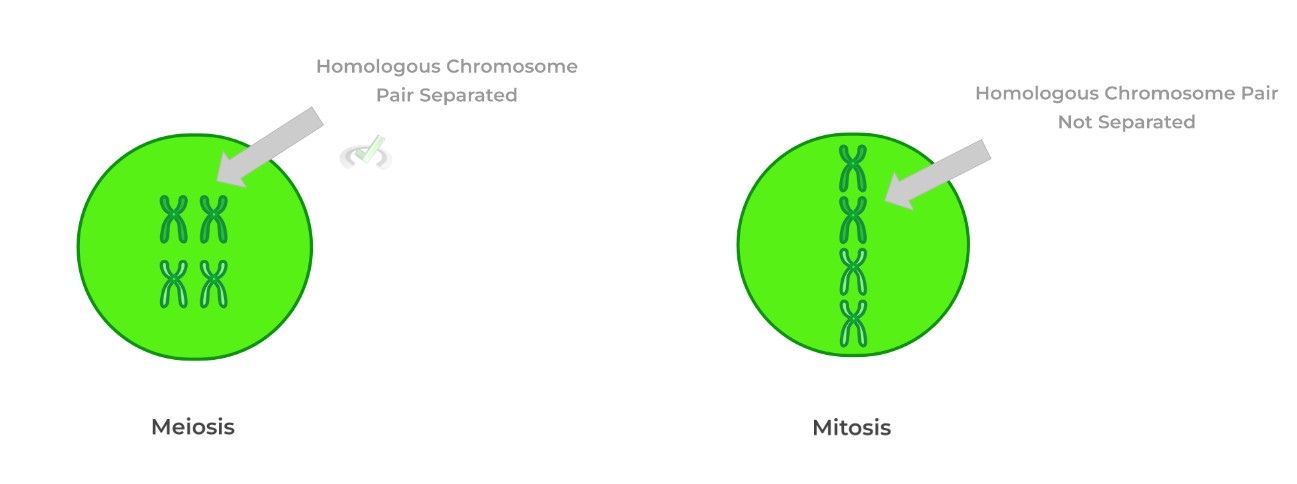
Additionally, metaphase I also allows for a chance to increase genetic diversity via different combinations of how the homologous chromosomes are aligned.
Let’s look again at an example! Still, we have a genotype of AaBb; however, the genes are on separate chromosomes.
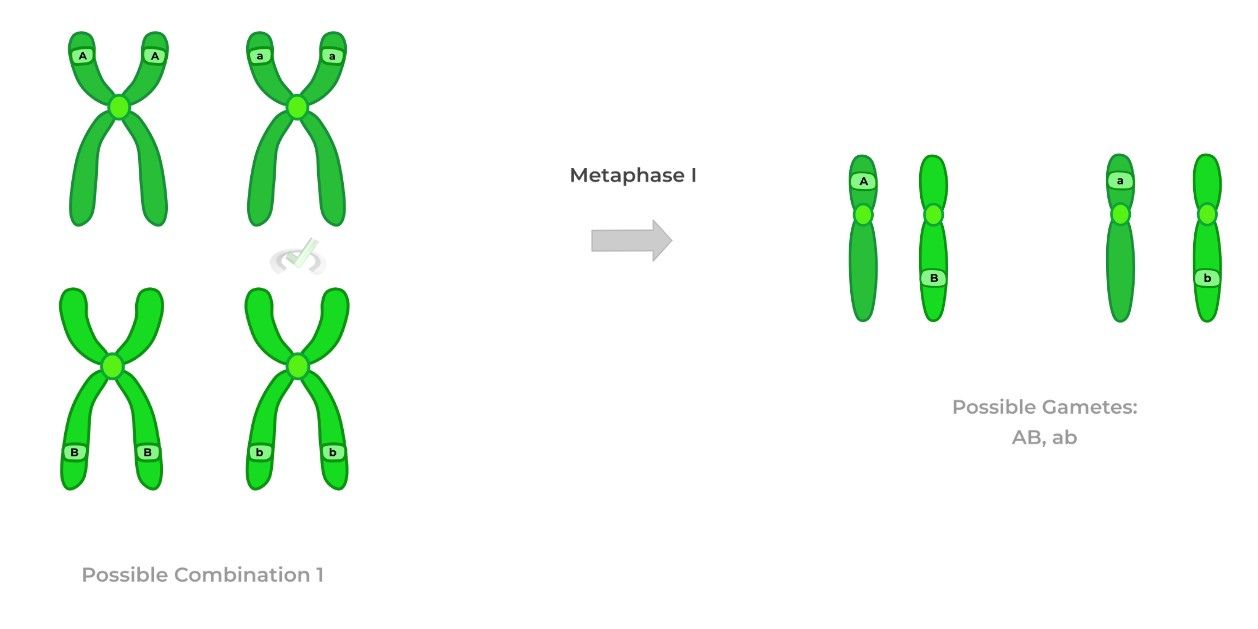
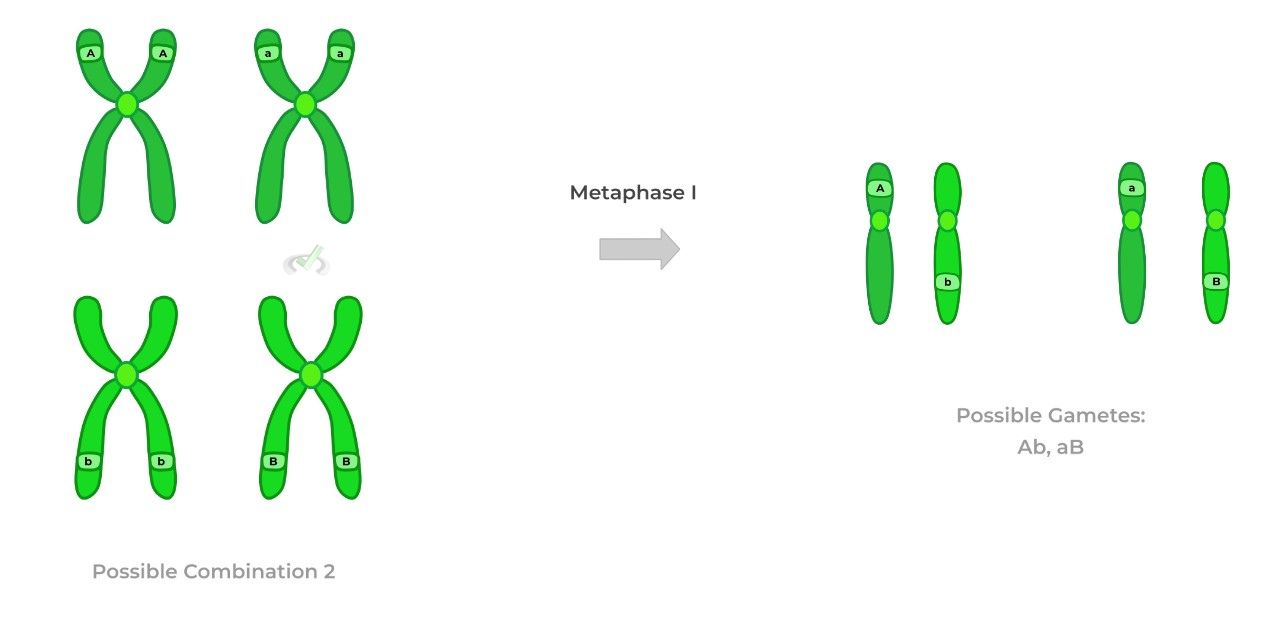
As shown, the different combinations of how the chromosomes align at the metaphase plate also allows for an increased generation of genetic diversity!
III. Anaphase I
After their alignment at the metaphase plate, the homologous chromosomes are separated. Again, we want to stress that it’s the homologous chromosomes that separate at anaphase I!
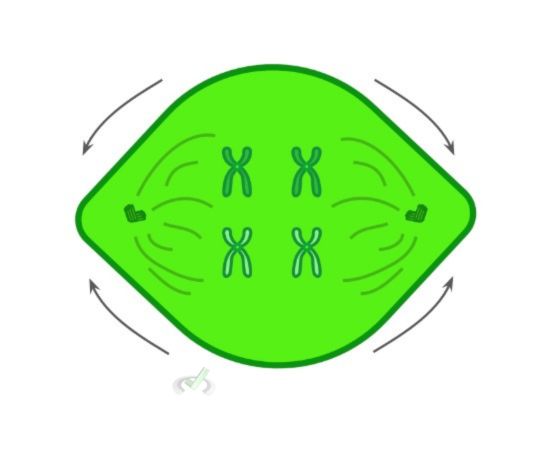
Because the homologous chromosomes are split apart, the resulting daughter cells will be haploid, as they only have 1 set of chromosomes.
IV. Telophase I
Finally, the cell splits into 2 haploid, daughter cells each with one set of chromosomes. These 2 haploid cells then proceed onto meiosis two in order separate the sister chromatids.

B. Meiosis II: Separation of Sister Chromatids and Genes
Luckily for us, meiosis II is much simpler than meiosis I and is actually fairly similar to mitosis! Here, the 2 haploid daughter cells undergo one more cell division separating their sister chromatids generating 4 haploid, daughter cells!
I. Prophase II
Just as with mitotic prophase and prophase I, the nuclear envelope disappears, chromosomes condense, and centrioles migrate once more.
II. Metaphase II
Again, to emphasize the difference between metaphase I, now the sister chromatids align at the metaphase plate instead of the homologous chromosomes!
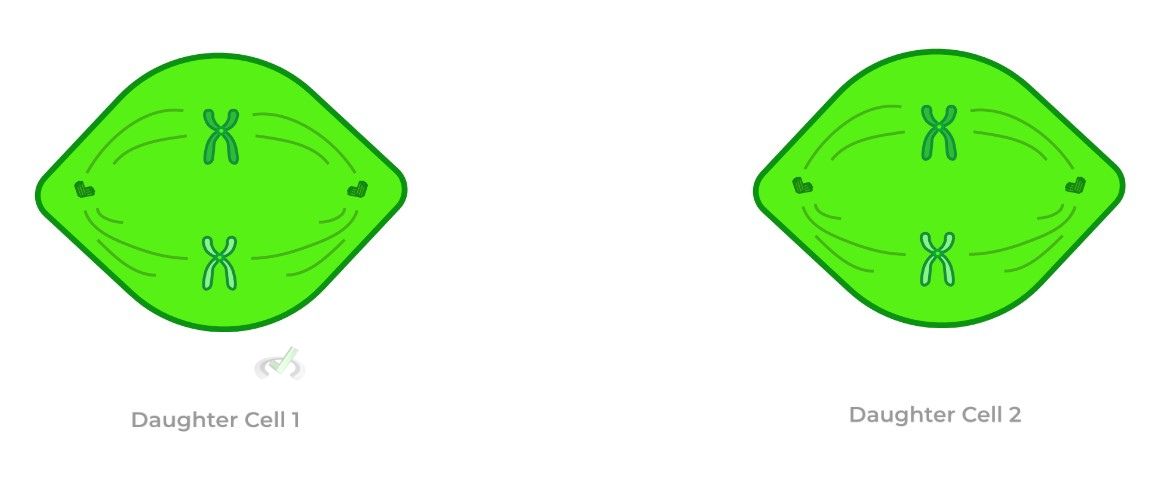
Compare this figure to the other visual shown in metaphase I! Hopefully when comparing the 2, the difference between them will be a bit more clear and easier to understand.
III. Anaphase II
After alignment, the 2 sister chromatids are separated which will eventually split into 2 daughter cells as shown below.
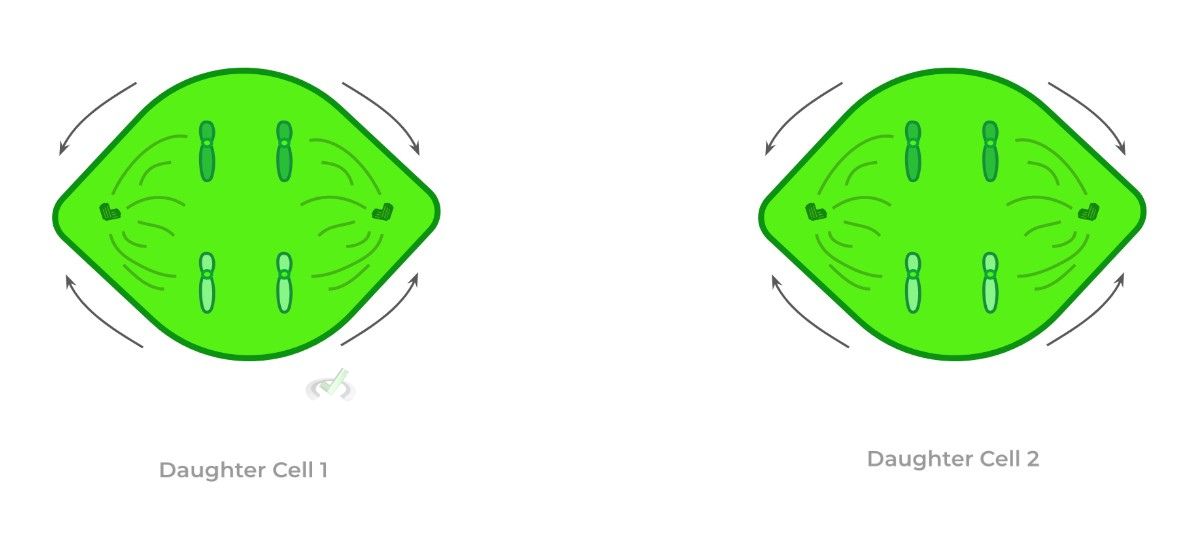
Compare this visual to the diagram shown in anaphase I to again get a better understanding of the differences between the 2!
IV. Telophase II
Finally, the 2 daughter cells split to generate 4 haploid, daughter cells as shown below! Remember this is different to mitosis as it only generates 2 genetically identical daughter cells.
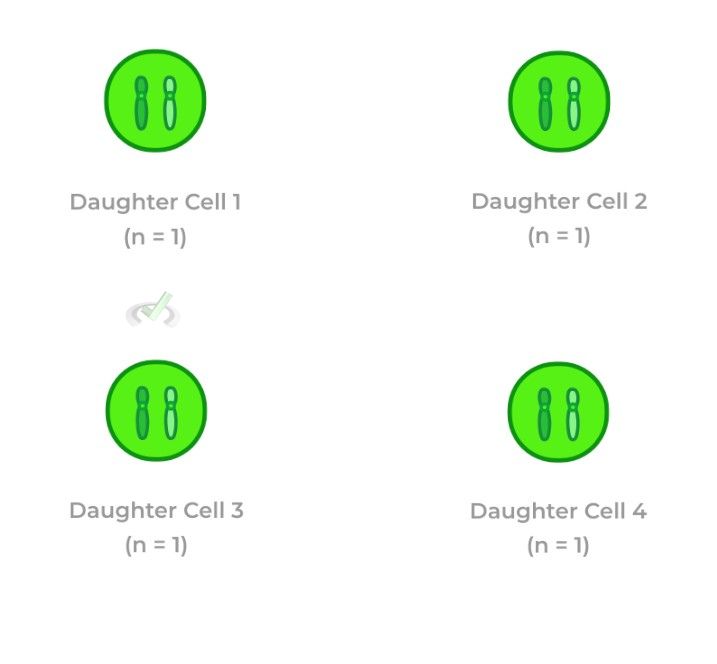
III. Bridge/Overlap
In addition to increasing the probability of genetic diversity, crossing over also supports Mendel’s law of independent assortment (at least in cases when genes are far apart). Let’s briefly review some Mendelian Genetics!
I. Crossing Over and Support for Independent Assortment
Recall that the law of independent assortment states that the alleles of 2 genes will sort into gametes independently of one another.
However, we prefer to think of it as the acquisition of 1 gene allele does not affect the type of allele it receives from another gene. Let’s picture this with an example!
Given the genotype AaBb, where the 2 genes are far apart on the same chromosome, each of the following gametes has a 25% distribution percentage.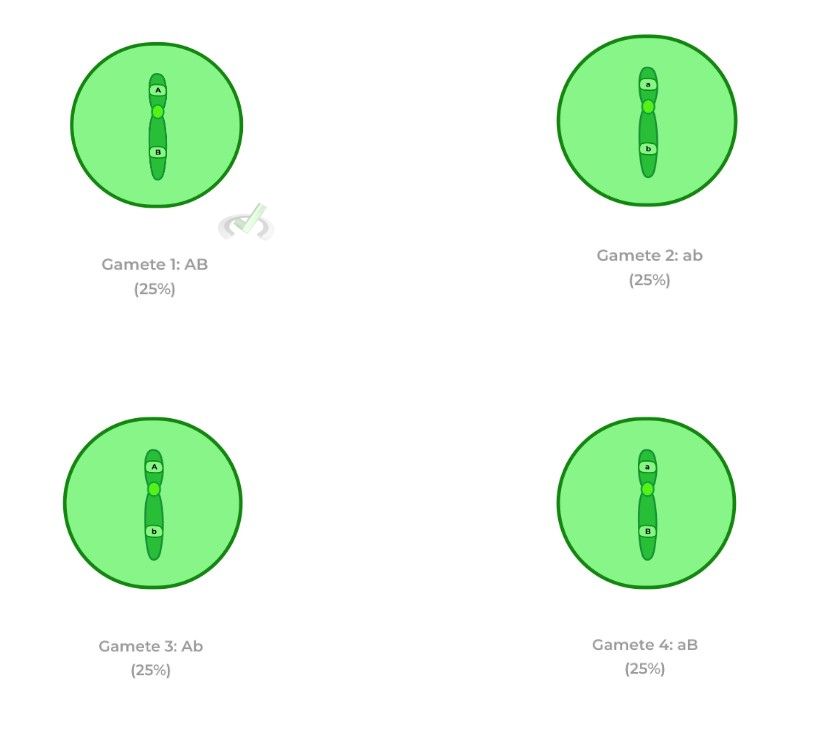
Now with this gamete distribution and comparing it to the visual shown in prophase I, we can see how crossing over mediates this independent assortment!
IV. Wrap Up/Key Terms
Let’s take this time to wrap up & concisely summarize what we covered above in the article!
A. Meiosis I: Segregation of Homologous Chromosomes
As stated in the subtitle, meiosis I involves the separation of the homologous chromosomes which generates the 2 haploid daughter cells.
I. Prophase I: Synaptic Crossing Over to Increase Genetic Diversity
In addition to the nuclear envelope degrading and chromosome condensation, a genetic recombination process called crossing over occurs to increase genetic diversity!
A pair of homologous chromosomes for a tetrad, synaptonemal complex where 2 nonsister chromatids interact at a point called the chiasmata.
It’s at chiasmata where the nonsister chromatids can exchange genetic information, specifically swapping 2 alleles of the same gene.II. Metaphase I
When the homologous chromosomes align on the metaphase plate, the different combinations of arrangement can also increase genetic diversity!
III. Anaphase I
It’s important to emphasize that the homologous chromosomes are being separated, as this is the biggest distinction between meiosis and mitosis!
IV. Telophase I
When the cell splits, 2 haploid daughter cells are generated, as each only contains 1 set of chromosomes!
B. Meiosis II: Segregation of Sister Chromatids and Genes
Compared to meiosis I, this process is much more simpler and is actually fairly similar to the process of mitosis, as sister chromatids are separated generating 4 haploid, daughter cells.
I. Prophase II
Again, as with mitotic prophase and prophase I, the nuclear envelope disappears, chromosomes condense, and centrioles migrate.
II. Metaphase II
Again, it’s important to emphasize that now the sister chromatids align at the metaphase plate instead of the homologous chromosomes.
III. Anaphase II
Now, the sister chromatids are separated and will eventually split into 4 daughter cells during telophase.
IV. Telophase II
The final resulting product after meiosis 2 is 4 haploid, daughter cells! Remember this is different to mitosis which only generates 2 genetically identical daughter cells.
V. Practice
Take a look at these practice questions to see and solidify your understanding!
Sample Practice Question 1:
List the following meiotic events in order.
I. Crossing Over
II. Sister Chromatids Align
III. Homologous Chromosomes Separate
IV. 4 Haploid, Daughter Cells Generated
A. I, III, II, IV
B. I, II, III, IV
C. I, II, IV, II
D. IV, I, II, III
Ans. A
This choice correctly depicts the meiotic events in order: crossing over (prophase I), homologous chromosome separation (anaphase I), sister chromatids align (metaphase II), and 4 haploid, daughter cells generated (telophase IV).
Sample Practice Question 2:
Which of the following best describes the ploidy state of a pre-meiotic cell, post-meiosis I cell, and post-meiosis II cell? (Note: The cell discussed is a human cell).
A. n ⇒ 2n ⇒ 2n
B. n ⇒ n ⇒ 2n
C. 2n ⇒ n ⇒ 2n
D. 2n ⇒ n ⇒ n
Ans. D
Recall that human cells are diploid because they have 2 sets of chromosomes. At the start of meiosis, the cell will be diploid because it still has both sets of chromosomes.
However, after meiosis I (and going forward), the cell will be haploid as the homologous chromosomes will have separated leaving each daughter cell with 1 set of chromosomes.







 To help you achieve your goal MCAT score, we take turns hosting these
To help you achieve your goal MCAT score, we take turns hosting these 





















 reviews on TrustPilot
reviews on TrustPilot